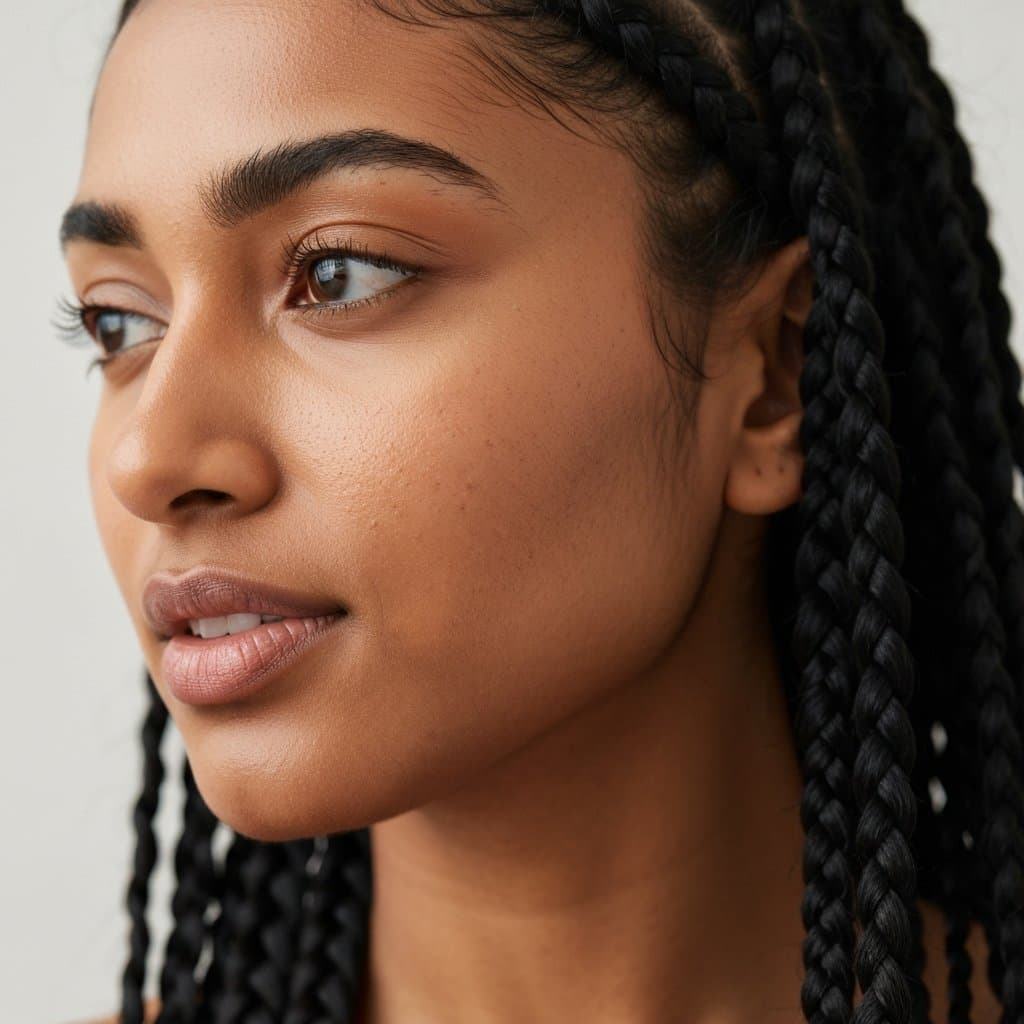The Knotless Revolution: Why Everyone Is Loving Knotless Braids | A Complete Guide
The Dawn of a New Era: Welcome to the Knotless Revolution
In the ever-evolving world of hair styling, few trends have made an impact as profound and lasting as the rise of knotless braids. This innovative technique has moved beyond a fleeting trend to become a cornerstone of protective styling, celebrated for its unique blend of beauty, comfort, and hair health. The knotless revolution isn't just about a new look; it's a fundamental shift in how we approach braided styles, prioritizing the well-being of the scalp and hair follicles without sacrificing an ounce of chic. From social media feeds to high-fashion runways, knotless braids are everywhere, and for very good reason.
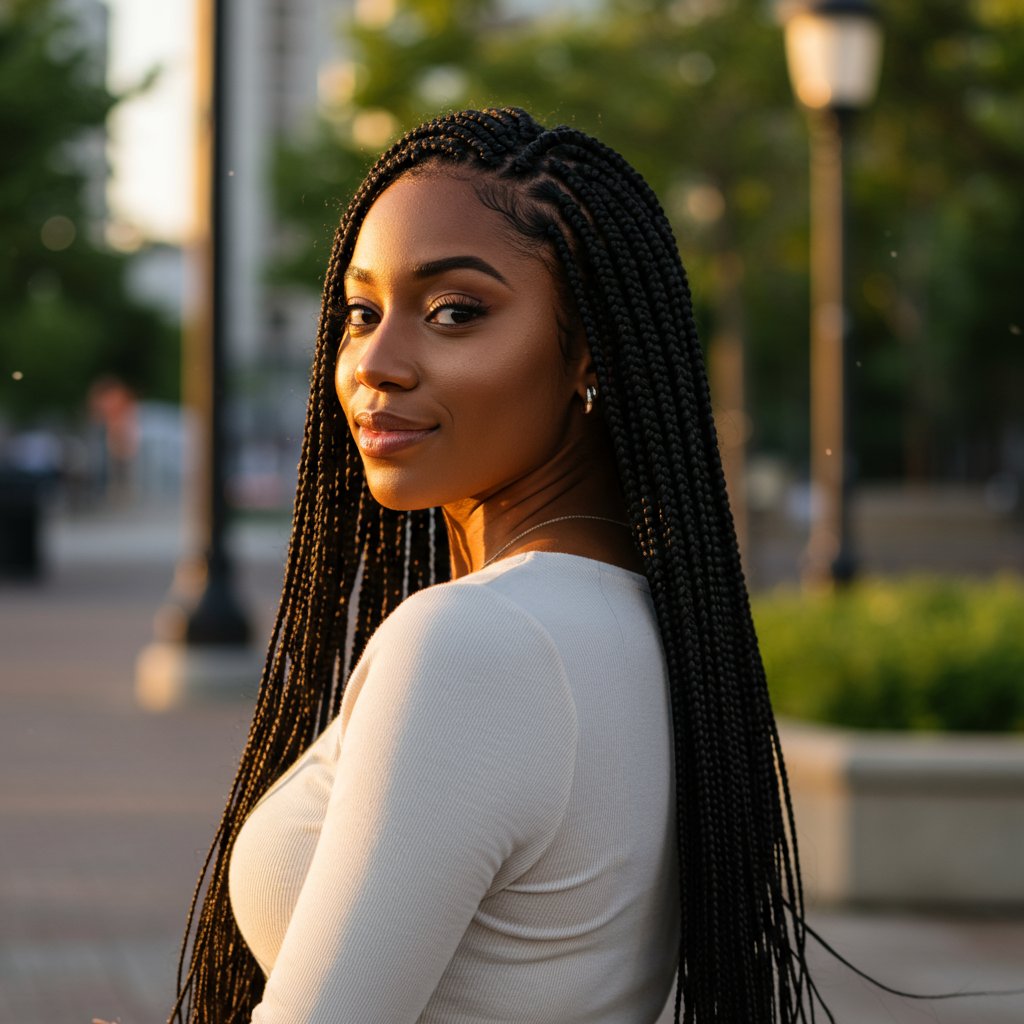
For decades, traditional box braids have been a beloved protective style, but they often came with a well-known caveat: the initial tightness and tension caused by the knot at the base of each braid. This discomfort was often accepted as a necessary part of the process. However, the knotless method challenges this old narrative. By starting with your natural hair and gradually feeding in braiding extensions, this technique eliminates the tension-heavy anchor knot, paving the way for a pain-free, lightweight, and incredibly natural-looking result. This guide will delve deep into the world of knotless braids, exploring why they have captured the hearts of stylists and clients alike and why they might just be the perfect protective style for you.
What Exactly Are Knotless Braids? A Deep Dive into the Technique
To truly appreciate the knotless revolution, it's essential to understand the technical difference that sets this style apart. Unlike traditional box braids, which begin by securing a knot of braiding hair at the root, knotless braids employ a sophisticated feed-in technique. The process begins by braiding a small section of your natural hair first. Then, the stylist skillfully and gradually adds small pieces of extension hair into the braid as they move down the hair shaft. This method creates a smooth, flat, and seamless transition from your natural hair to the extension.
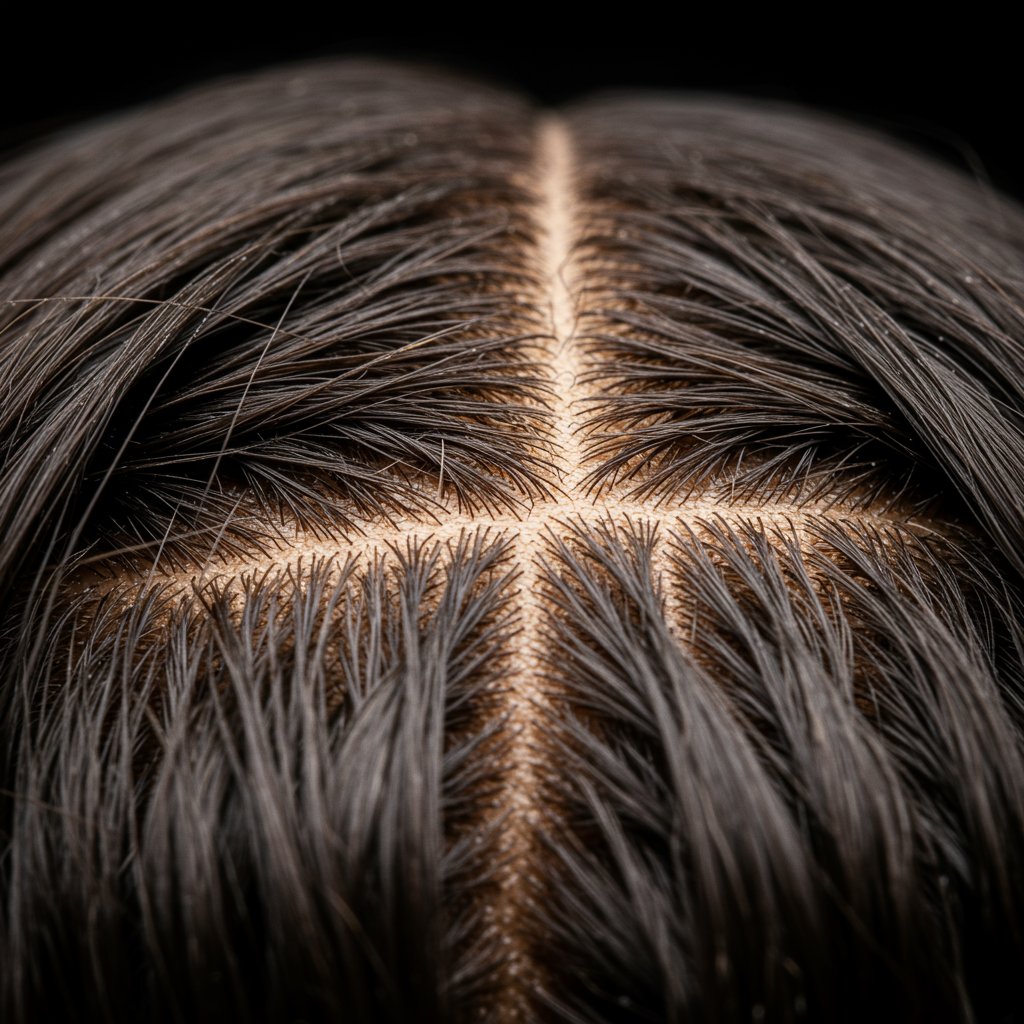
The Anatomy of a Braid: Knotless vs. Traditional
Traditional Box Braids: The process starts by wrapping a piece of extension hair around a section of natural hair at the scalp and creating a tight knot to secure it. This knot forms a raised, bulky base. While secure, this anchor point is the primary source of the tension, pulling directly on the hair follicles. This can lead to immediate discomfort, headaches, and in some cases, long-term issues like traction alopecia.
Knotless Braids: The absence of this initial knot is the game-changer. Since the braid starts with your own hair, the tension is distributed evenly, and the base lies flat against the scalp. The gradual addition of extension hair ensures the weight is also distributed more evenly down the length of the braid, making the entire style feel significantly lighter and more flexible from the very first moment. This meticulous technique not only protects the scalp but also results in a look that appears to be growing directly from the roots, offering a far more natural aesthetic.
The Unmatched Comfort: Less Tension, More Gain
The most celebrated benefit of knotless braids is unequivocally the superior comfort level. Clients who have made the switch often describe the experience as transformative, finally enjoying a protective style without the initial days of pain, tension headaches, or sleepless nights. This comfort isn't just a luxury; it's a crucial component of promoting long-term hair and scalp health. The constant, aggressive pulling from traditional knots can inflame hair follicles, leading to scalp sensitivity, breakage, and even permanent hair loss known as traction alopecia.
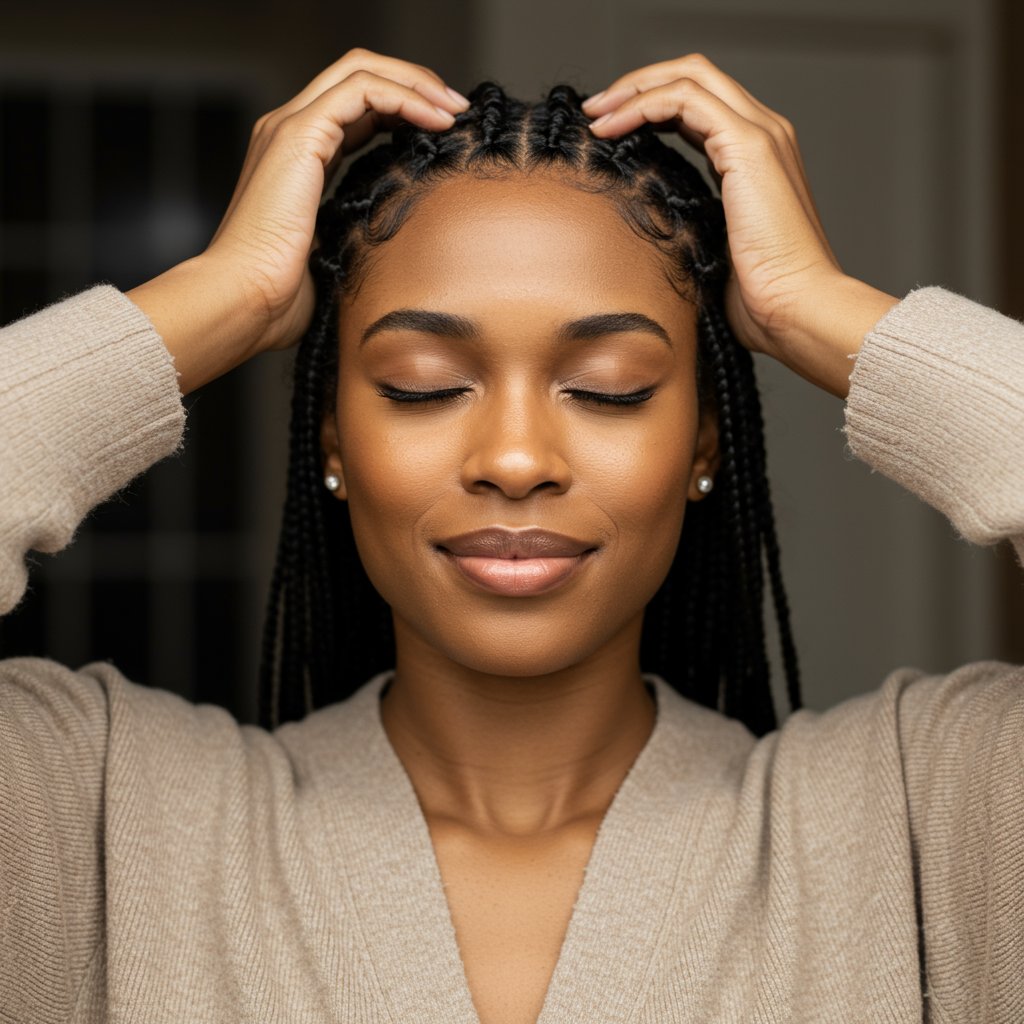
Knotless braids mitigate these risks significantly. By eliminating the high-tension anchor point, the style places minimal stress on the scalp. This gentle approach means you can enjoy immediate flexibility, pulling your hair into a ponytail or bun on the same day as your appointment without wincing in pain. This reduction in tension also allows the scalp to breathe and reduces the risk of follicle inflammation or bumps (folliculitis) that can sometimes appear after a tight braiding session. It’s a proactive choice for anyone with a sensitive scalp or those who are focused on preserving the health and density of their hairline.
A Flawlessly Natural Look: The Seamless Transition
Beyond comfort, the aesthetic appeal of knotless braids is a major driver of their popularity. The technique produces a sleek, flat, and incredibly natural-looking finish. Because the braid starts with your natural hair, the base is not bulky and blends seamlessly with the scalp. This creates the beautiful illusion that the braids are growing directly from your roots, a stark contrast to the more noticeable, raised base of traditional box braids. This subtle, organic appearance makes the style look less like an addition and more like an extension of your own hair.
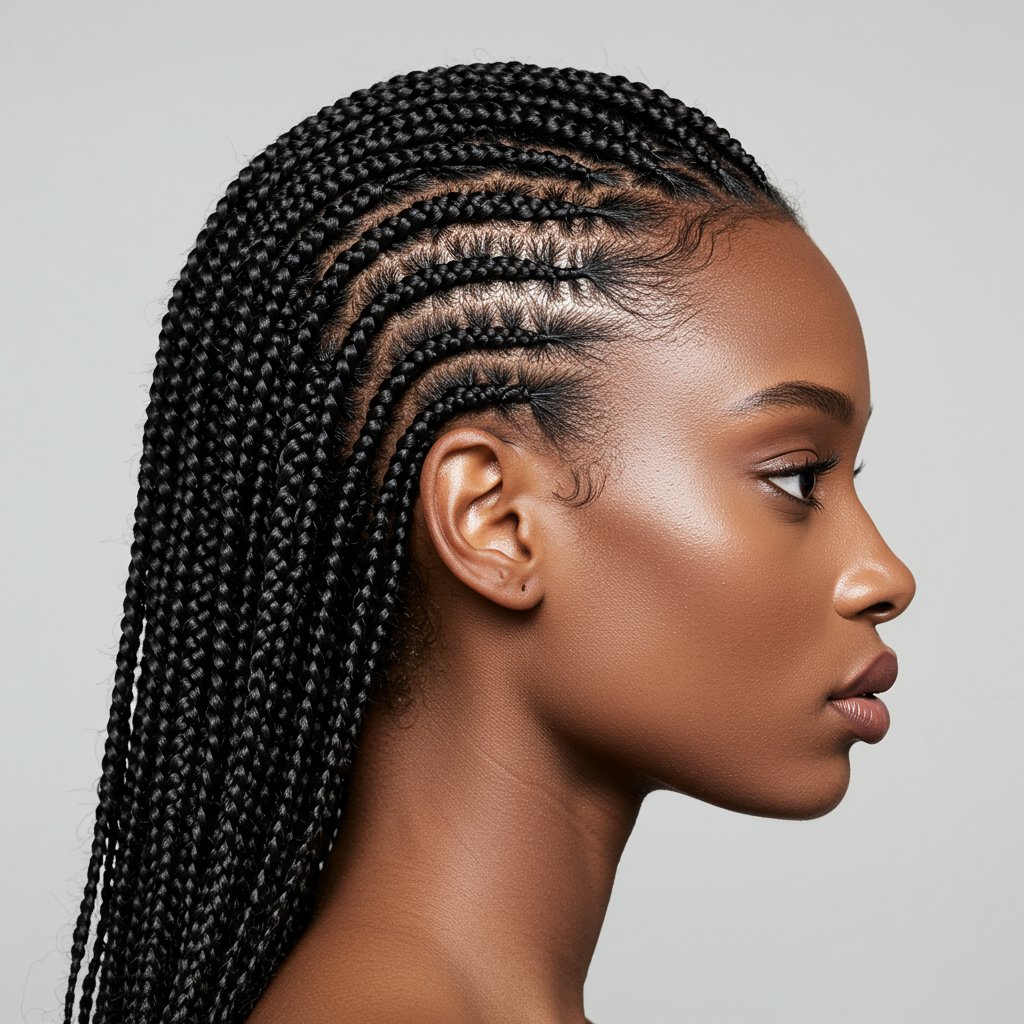
This natural look enhances the overall versatility and sophistication of the style. It lends itself well to a variety of partings—center, side, or intricate geometric patterns—without the distraction of bulky knots at the hairline. Whether you're aiming for a casual, everyday look or an elegant updo for a formal event, the seamless foundation of knotless braids provides a more polished and refined canvas. It’s this attention to detail and the focus on a natural aesthetic that has made knotless braids a favorite among those who value both style and subtlety.
Versatility Redefined: Styling Your Knotless Braids
One of the most liberating aspects of knotless braids is the immediate styling freedom they afford. The pain and stiffness associated with new traditional braids often mean waiting several days, or even a week, before you can comfortably style your hair in an updo. With knotless braids, that waiting period is eliminated. The lack of tension at the root provides unparalleled flexibility from the moment you leave the salon chair. This means you can sweep your braids into a high ponytail, a chic topknot, or elegant half-up styles without any discomfort.
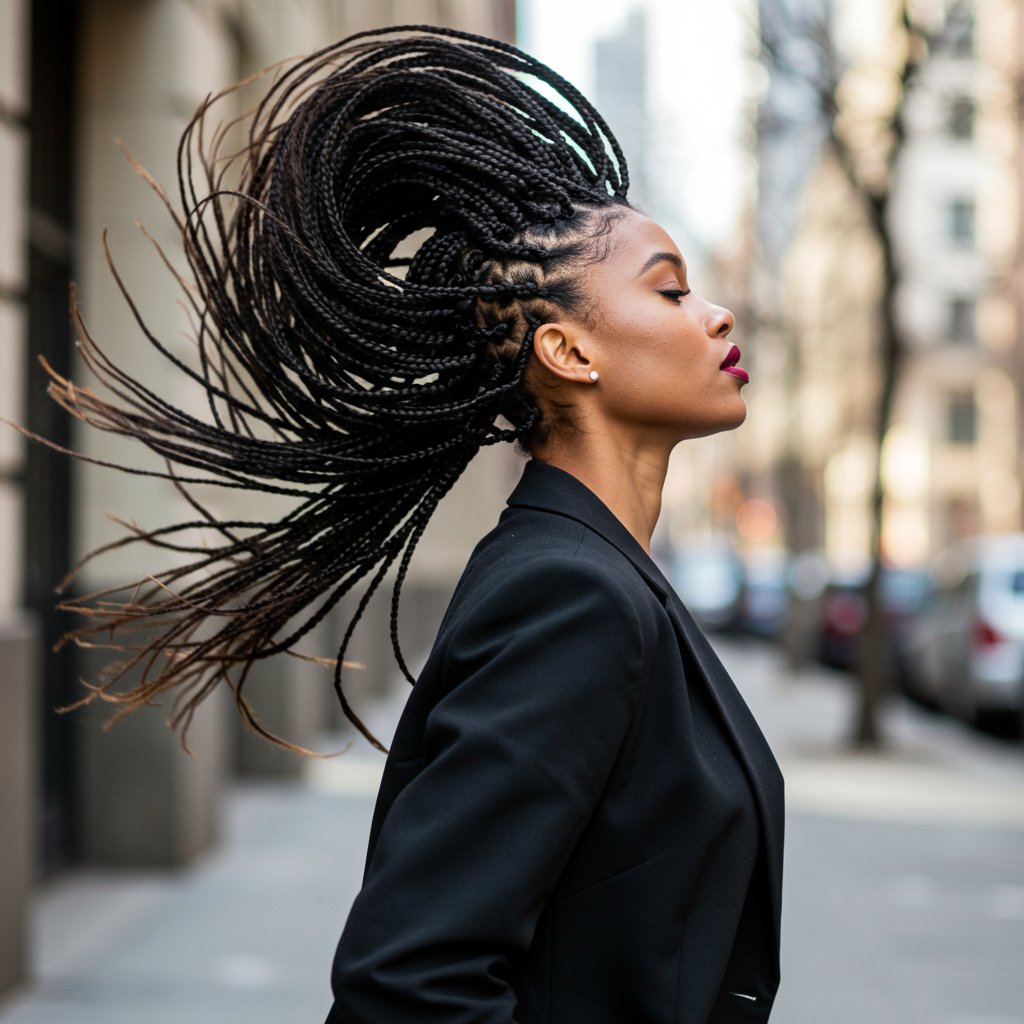
This inherent flexibility opens up a world of styling possibilities. You can experiment with intricate updos for special occasions, casual side-swept looks for the weekend, or a professional, low bun for the office. The braids move and flow more naturally, behaving more like loose hair than a rigid style. This adaptability makes knotless braids a highly practical choice for individuals with active lifestyles or those who enjoy changing their look frequently. The ability to style them in various ways not only adds to their value but also helps in distributing the weight differently each day, further contributing to scalp comfort.
Longevity and Maintenance: Protecting Your Investment
While knotless braids are gentler on the scalp, proper maintenance is key to maximizing their lifespan and keeping both your hair and the style looking fresh. Typically, knotless braids can last anywhere from four to eight weeks, depending on your hair's growth rate, your daily routine, and your maintenance regimen. To get the most out of your style, it's crucial to establish a consistent care routine that focuses on scalp health and moisture.
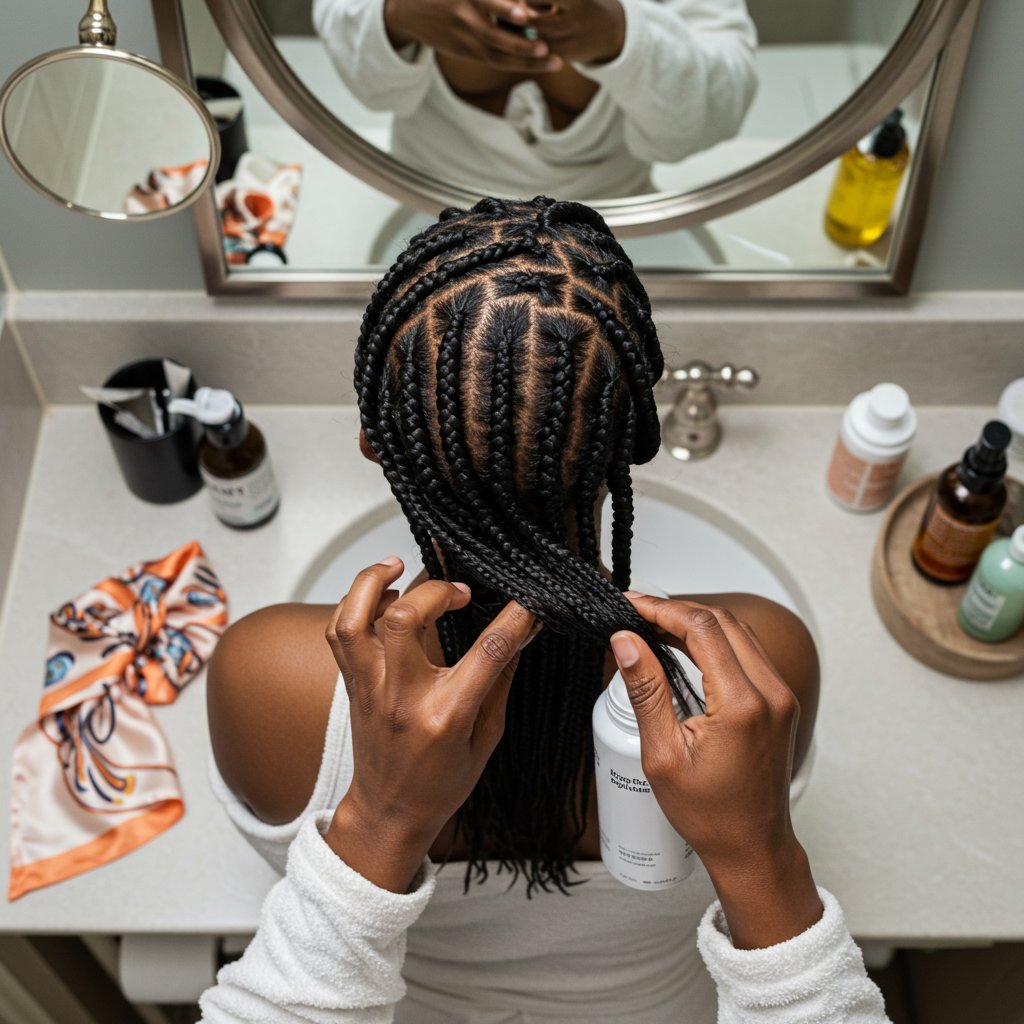
Essential Maintenance Practices
- Scalp Cleansing: While you can't wash your hair as you normally would, keeping your scalp clean is vital. Use a cloth or cotton pad soaked in a mixture of water and a gentle, sulfate-free shampoo or apple cider vinegar to wipe down your scalp and the base of the braids every 7-10 days. Follow up with a light rinse, being careful not to create excessive frizz.
- Moisture is Key: Protective styles can sometimes lead to dryness. Lightly mist your braids with a leave-in conditioner or a water-based braid spray every few days to keep your natural hair hydrated. Focus on the length of the braids and seal in moisture with a light oil, like jojoba or almond oil, applied to your scalp and the braids themselves.
- Nighttime Protection: This is non-negotiable. To prevent frizz, protect your edges, and maintain the sleekness of your braids, always sleep with a silk or satin scarf, bonnet, or on a silk/satin pillowcase. This reduces friction and helps the style last longer.
- Avoid Over-Styling: While versatile, constantly pulling your braids into very tight styles can reintroduce tension. Opt for looser styles to maintain the integrity of your hair and scalp.
Are Knotless Braids Right for You? Hair Types and Considerations
Knotless braids are remarkably versatile and suitable for a wide range of hair types and textures, from fine and wavy to thick and coily. However, a few factors should be considered before booking an appointment. The health of your natural hair is paramount. Because the style begins with your own hair, you need at least two to three inches of length for the stylist to have enough to grip and start the braid securely. It's also important that your hair is in a healthy, moisturized state to withstand being in a long-term style.
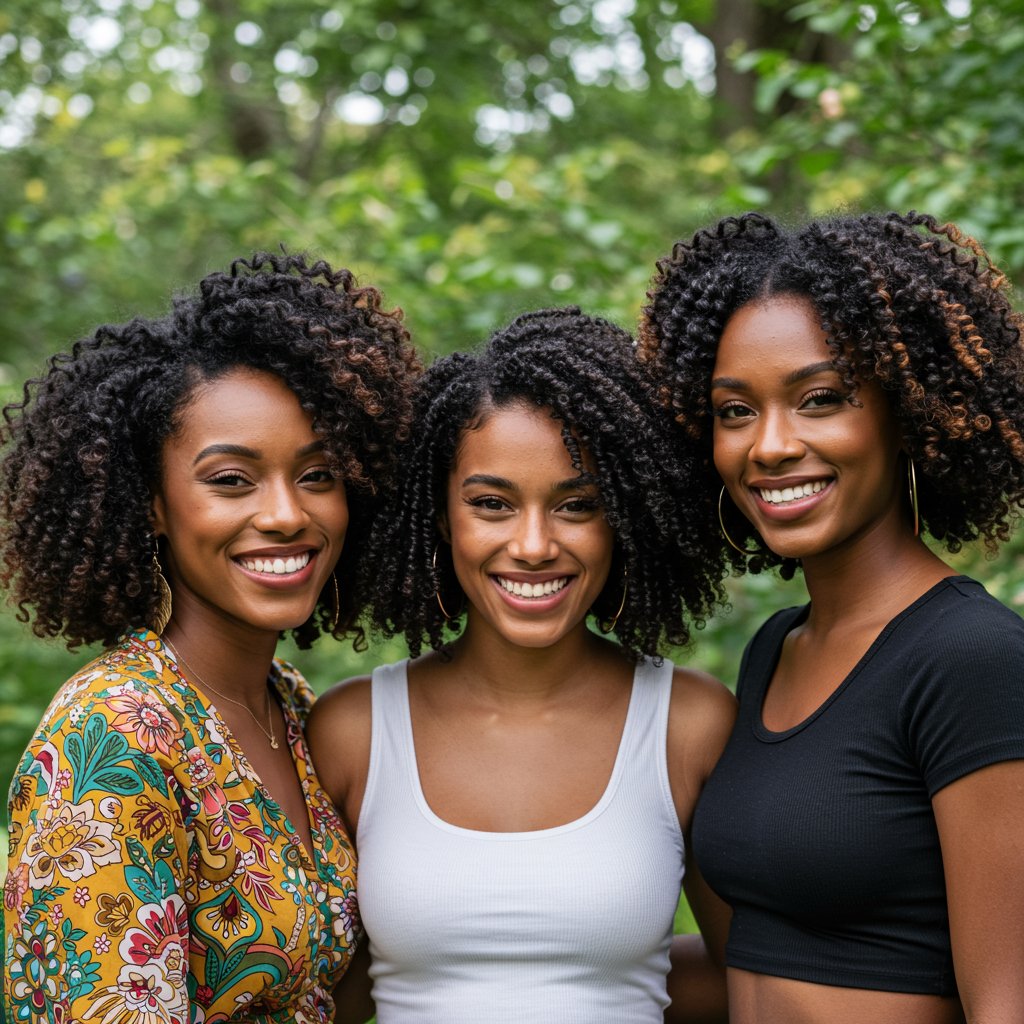
Individuals with extremely fine hair or those experiencing significant hair thinning may want to consult with a professional stylist. An experienced braider can assess your hair's density and advise on the appropriate size and weight for the braids to ensure they don't cause undue stress. For those with sensitive scalps, knotless braids are often the ideal solution, providing the beauty of braids without the painful tension. Ultimately, a thorough consultation with a skilled braiding specialist is the best way to determine the perfect size, length, and approach for your unique hair profile.
The Installation Process: What to Expect at the Salon
Knowing what to expect during your knotless braids appointment can help you prepare and ensure a smooth, enjoyable experience. The process is meticulous and can take anywhere from four to nine hours, depending on the desired size and length of your braids. It begins with properly prepped hair—arriving at the salon with your hair freshly washed, detangled, and thoroughly blow-dried straight is standard practice, as it allows for cleaner parts and a sleeker finish.
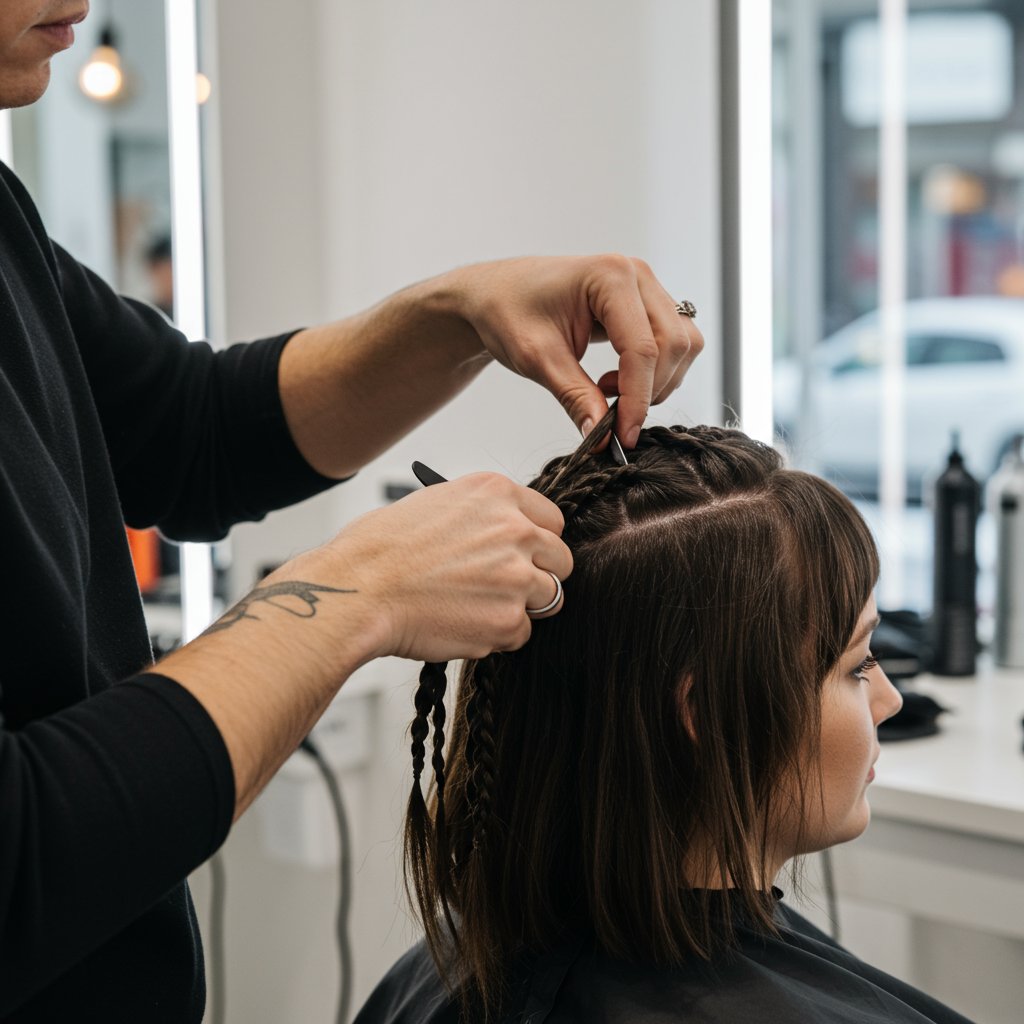
- Consultation: You'll discuss the desired size (small, medium, large), length, and color of the braids with your stylist.
- Parting: Your stylist will meticulously part your hair into a clean grid. The precision of these parts forms the foundation of a beautiful, neat style.
- Braiding: The stylist will begin braiding each section, starting with your natural hair and seamlessly feeding in the extension hair.
- Finishing: Once all braids are installed, the ends are typically sealed by dipping them in hot water. This secures the braid and gives it a clean finish. Finally, a light mousse or styling foam is often applied to set the braids and tame any flyaways.
Pro Tips for Flawless Knotless Braids
To keep your knotless braids looking salon-fresh for as long as possible, incorporate these expert tips into your routine.
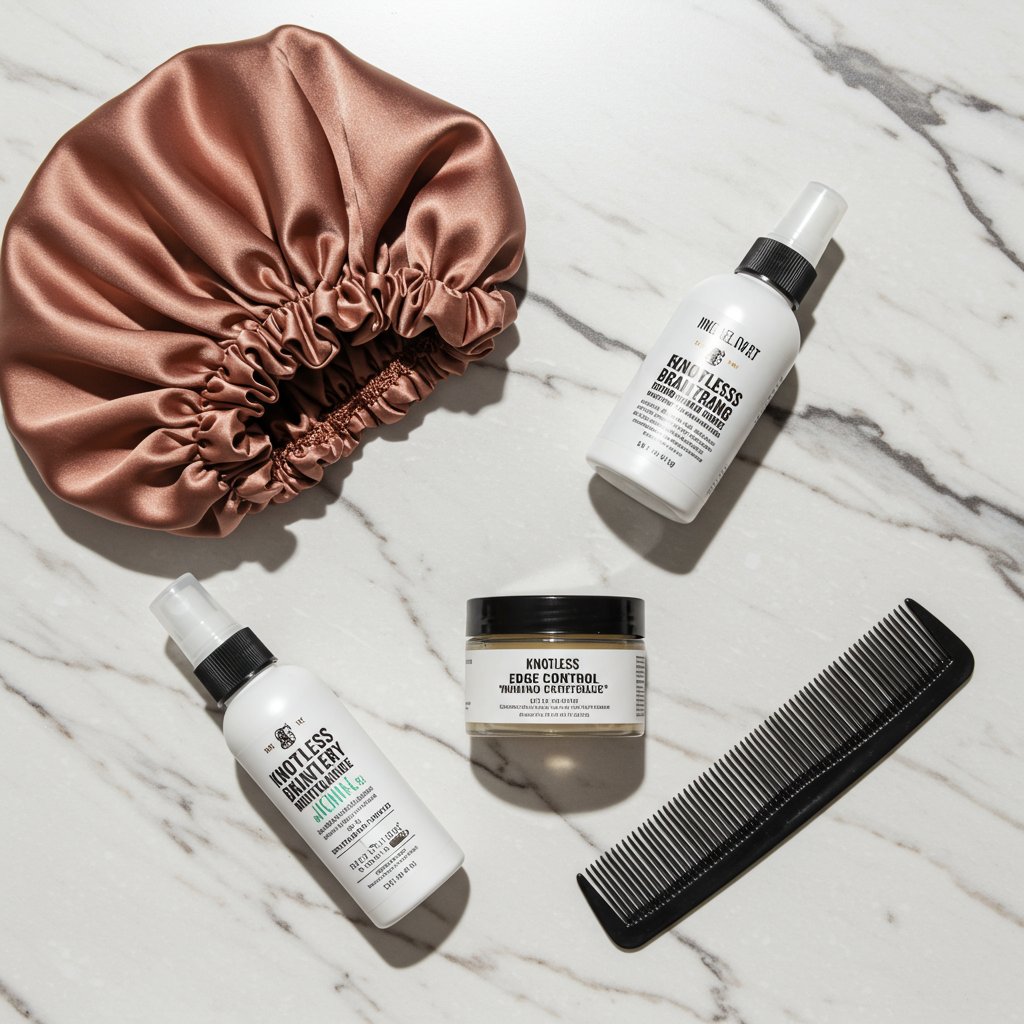
- Refresh Your Edges: Use a quality edge control to lay your edges for a polished look. A little goes a long way.
- Combat Frizz: Apply a light mousse over your braids every few days and wrap them with a scarf for about 30 minutes. This will help compress any flyaways and restore a sleek appearance.
- Don't Leave Them In Too Long: Adhere to the recommended 4-8 week window. Leaving any protective style in for too long can lead to matting, product buildup, and breakage during the take-down process.
- Gentle Takedown: When it's time to remove your braids, be patient. Use a spray bottle with water and conditioner to add slip, and gently unbraid each one. Detangle each section as you go to prevent a massive detangling session at the end.
Knotless Braids FAQ: Your Questions Answered
1. Are knotless braids less painful than traditional braids?
Absolutely. The primary advantage of knotless braids is the tension-free installation. By eliminating the tight knot at the base, they are significantly more comfortable and place minimal stress on the scalp, even on the first day.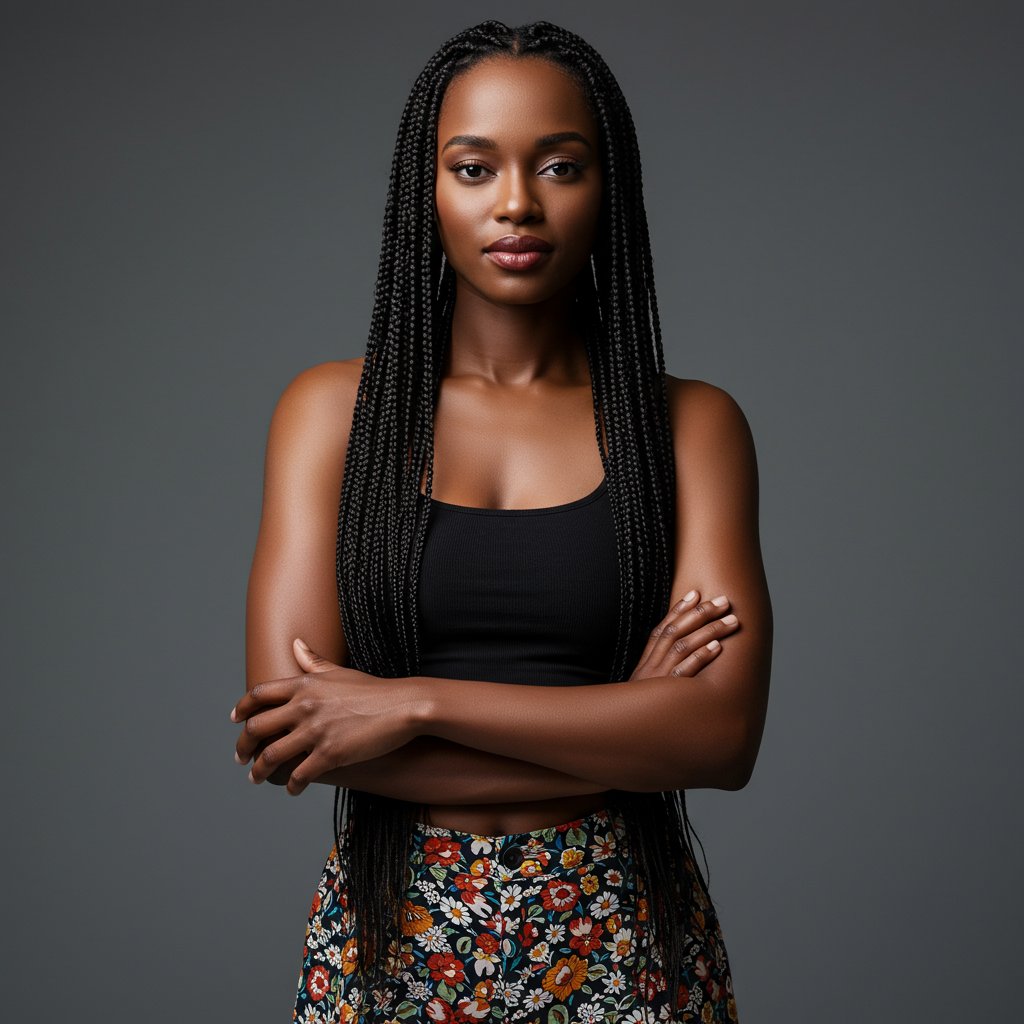
2. How long does my natural hair need to be for knotless braids?
A minimum of 2-3 inches of hair is generally recommended so the stylist has enough to grip and begin the braid securely before feeding in extensions.3. Can knotless braids damage my hair?
When installed and maintained correctly, knotless braids are one of the safest protective styles. The damage associated with braids usually comes from excessive tension or improper care. The gentle nature of the knotless technique makes it a hair-health-focused option.4. How much do knotless braids typically cost?
The cost varies widely based on location, stylist experience, and the desired size and length of the braids. Because the technique is more intricate and time-consuming, they are generally more expensive than traditional box braids.5. What kind of hair is best for knotless braids?
Most stylists prefer to use pre-stretched Kanekalon or a similar synthetic braiding hair. Pre-stretched hair has feathered ends, which helps create a more natural, non-bulky finish and reduces installation time.6. Can I get knotless braids wet?
Yes, you can swim with knotless braids. However, it's important to care for them afterward. Rinse them thoroughly with fresh water to remove chlorine or salt, gently squeeze out excess water with a towel, and allow them to air dry completely to prevent mildew.The Verdict: A Revolution in Style and Comfort
The rise of knotless braids represents more than just a new styling option; it signifies a positive evolution in the world of protective styling. It’s a technique born from a desire to merge aesthetic beauty with genuine hair and scalp care. By eliminating the painful tension of traditional knots, knotless braids offer a comfortable, lightweight, and incredibly versatile experience that promotes hair health rather than compromising it. Their seamless, natural appearance provides a sophisticated and timeless look suitable for any occasion.
Whether you are a long-time braid enthusiast or considering a protective style for the first time, the knotless method is a compelling choice. It stands as a testament to the idea that you don't have to sacrifice comfort for style. The knotless revolution is here to stay, empowering individuals to protect their natural hair with a method that is as gentle and healthy as it is beautiful. To embark on your own knotless journey, seek out an experienced, professional stylist who can provide a flawless installation and guide you on personalized care for your new style.

